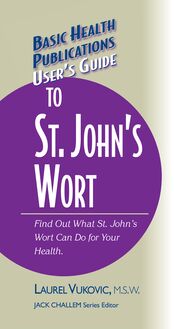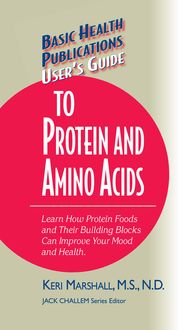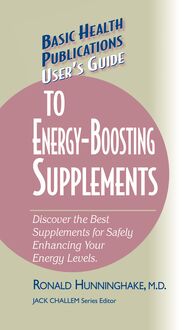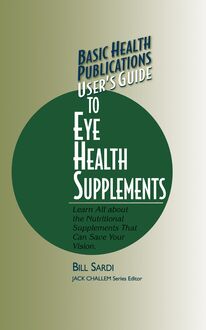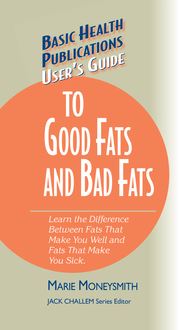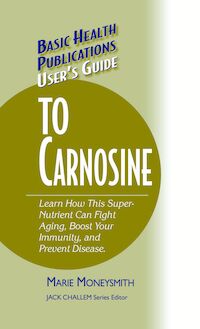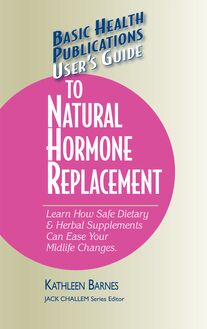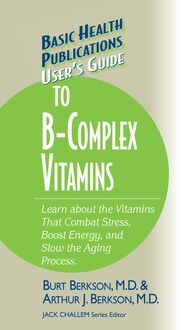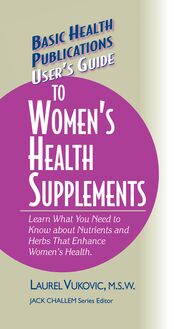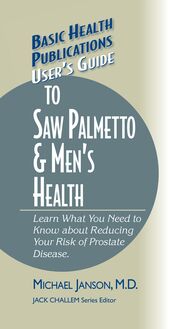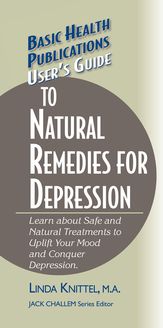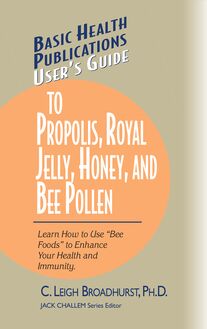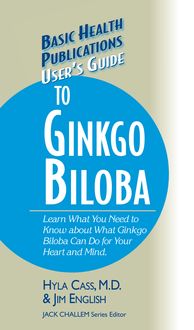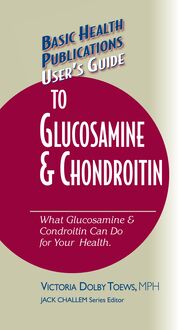User's Guide to Sports Nutrients , livre ebook
50
pages
English
Ebooks
2002
Vous pourrez modifier la taille du texte de cet ouvrage
Obtenez un accès à la bibliothèque pour le consulter en ligne En savoir plus
Découvre YouScribe en t'inscrivant gratuitement
Découvre YouScribe en t'inscrivant gratuitement
50
pages
English
Ebooks
2002
Vous pourrez modifier la taille du texte de cet ouvrage
Obtenez un accès à la bibliothèque pour le consulter en ligne En savoir plus
Publié par
Date de parution
01 novembre 2002
Nombre de lectures
2
EAN13
9781591206088
Langue
English
Poids de l'ouvrage
1 Mo
Publié par
Date de parution
01 novembre 2002
Nombre de lectures
2
EAN13
9781591206088
Langue
English
Poids de l'ouvrage
1 Mo
The information contained in this book is based upon the research and personal and professional experiences of the author. It is not intended as a substitute for consulting with your physician or other healthcare provider. Any attempt to diagnose and treat an illness should be done under the direction of a healthcare professional.
The publisher does not advocate the use of any particular healthcare protocol but believes the information in this book should be available to the public. The publisher and author are not responsible for any adverse effects or consequences resulting from the use of the suggestions, preparations, or procedures discussed in this book. Should the reader have any questions concerning the appropriateness of any procedures or preparation mentioned, the author and the publisher strongly suggest consulting a professional healthcare advisor.
Series Editor: Jack Challem
Editor: Carol Rosenberg
Typesetter: Gary A. Rosenberg
Series Cover Designer: Mike Stromberg
Basic Health Publications User’s Guides are published by Basic Health Publications, Inc.
8200 Boulevard East
North Bergen, NJ 07047
1-800-575-8890
Copyright © 2002 by Dave Tuttle
ISBN-13: 978-1-59120-608-8
ISBN-10: 1-59120-020-2
All rights reserved. No part of this publication may be reproduced, stored in a retrieval system, or transmitted, in any form or by any means, electronic, mechanical, photocopying, recording, or otherwise, without the prior written consent of the copyright owner.
Printed in the United States of America
10 9 8 7 6 5 4 3 2 1
C ONTENTS
Introduction
1. Protein Supplements and Meal-Replacement Powders
2. Creatine
3. Glutamine and Other Secretagogues
4. Vitamins and Minerals
5. Ecdysterone
6. Ginseng and Astragalus
7. Phosphatidylserine
8. Methoxyisoflavone and Ipriflavone
9. Ribose
10. MSM
11. Caffeine, Ephedrine, and Other Diet Aids
12. Sports Drinks
Conclusion
Selected References
Other Books and Resources
I NTRODUCTION
D uring the past decade, there has been an explosion of new sports-nutrition products. From meal-replacement powders to esoteric nutrients like ecdysterone and methoxyisoflavone, supplement companies are offering an unprecedented number of products that can build muscle, reduce recovery time, and enhance sports performance.
This has been a double-edged sword for consumers. On one hand, some of these new offerings are among the most powerful and effective nutrients ever sold. On the other hand, the vast numbers of available products can be confusing for even the most advanced athlete. Which products are the real winners, and which are also-rans? Since money doesn’t grow on trees, how can you make the best choices for your particular sports needs and budget? This User’s Guide to Sports Nutrients will answer these questions.
Some of the nutrients discussed in this book are probably familiar to you, such as protein powders and creatine. But do you know the best times to take these nutrients, and which of the available forms works best? By the time you finish this guide, you will have a comprehensive knowledge of these supplements, allowing you to use them to peak advantage in advancing your sports progress.
Other products are so new that you may not have heard about them yet. With fancy names like ipriflavone and phosphatidylserine, these complex molecules certainly sound like they should work. And many of them do. This guide will reveal the current state of research into these new kids on the block. Some have impressive bodies of scientific investigation behind them, while others have only animal studies to support their use. User’s Guide to Sports Nutrients will tell it like it is, helping you to make decisions regarding your own purchases in this ever-changing field. This will include information on dosages, the need for on and off cycles to maintain effectiveness, and much more.
Everyone wants to get the biggest bang for their supplement bucks. You may have been disappointed that certain products didn’t live up to their advertisers’ claims, and as a result, you may be hesitant to sample new products. But you can’t progress in your sports endeavors without trying new things. User’s Guide to Sports Nutrients will provide you with the unbiased information you need to make the right choices.
CHAPTER 1
P ROTEIN S UPPLEMENTS AND M EAL -R EPLACEMENT P OWDERS
I t is hard to overemphasize the importance of protein in an athlete’s diet. While there are numerous supplements that enhance protein synthesis, you can’t synthesize new muscle proteins without adequate raw material—the amino acids in dietary protein. Training at a high intensity and then depriving your body of the protein it needs is like hitting your head against a wall. Nothing beneficial will result, and you could damage your hard-earned muscle growth in the process.
While it is theoretically possible to eat enough meat, fish, poultry, and dairy products to get the protein you need, most athletes find it difficult to do so. It takes time to fix meals and even more time to eat them and clean the dishes. This has led many busy men and women to get part of their protein requirements from protein powders and meal-replacement powders (MRPs).
Essential Building Blocks
Protein is an essential nutrient for all people, but especially for athletes. There is some protein in every single cell of the human body. Brain cells, for example, are 10 percent protein while red blood cells and muscle cells contain as much as 20 percent protein. All in all, protein makes up nearly 15 percent of your body weight, more than any other substance except water.
These body proteins have a wide range of functions, including tissue growth and development. Two protein-based filaments inside the muscle fiber, known as actin and myosin, are responsible for all muscle contraction. Tendons, ligaments, hair, skin, and nails are specialized kinds of structural proteins. Proteins are even needed to form most hormones, including insulin and growth hormone. The body manufactures all of these different proteins from amino acids.
The adult body can normally produce twelve of these amino acids on its own, hence the term “nonessential” amino acids. They are alanine, arginine, asparagine, aspartic acid, cysteine, glutamine, glutamic acid, glycine, histidine, proline, serine, and tryptophan. The other eight amino acids are called “essential” because they must be supplied by the diet. They are isoleucine, leucine, and valine (the branched-chain amino acids) plus lysine, methionine, phenylalanine, threonine, and tryptophan.
Amino Acid
A component of dietary protein that contains nitrogen and other elements. The human body requires twenty amino acids to function properly.
When your body has enough amino acids, you have a positive nitrogen balance. This means that you have sufficient nitrogen to support all of your body’s needs with enough left over to permit muscle growth. Inadequate protein consumption relative to your needs results in a negative nitrogen balance.
Your Daily Protein Requirement
One of the main questions that athletes ask is how much protein they should consume. The U.S. Government has established a recommended intake of 0.8 grams per kilogram (g/kg) of body weight per day. That’s equal to 0.36 grams per pound (g/lb). While some nutritionists maintain that this is a liberal allowance that provides enough protein for active individuals, recent research shows otherwise.
A number of studies, including several by Dr. Peter Lemon of the University of Western Ontario, show that most strength athletes need 1.7–1.8 g/kg (about 0.8 g/lb). Endurance athletes need a bit less: 1.2–1.4 g/kg (about 0.6 g/lb). These figures are based on total body weight. (Although body fat does not require protein, it is easier for athletes to compute their protein needs based on total body weight.)
Kilogram
Part of the metric system of measurement. A kilogram is equal to 1,000 grams and 2.2 pounds.
The foregoing requirements are for athletes who train three to four times per week. If you exercise more than this or train at a very high level of intensity, your protein requirement could be as high as 2.5 g/kg (1.1 g/lb) according to some researchers. For simplicity, try to maintain a daily intake of 1 g of protein per pound of body weight.
You need to eat an adequate amount of protein every day, even on the days you don’t exercise. The body uses protein continuously to provide the raw materials for muscle growth, repair, and maintenance. However, only so much protein can be stored inside the muscle cells and in the blood and organs. So, if you consume too much protein at once, your body may eventually convert the excess into carbohydrate or fat.
At the same time, there is no scientific evidence to support the frequently heard idea that the body can assimilate only 35 g of protein at once. You can eat more than this amount per meal if you like, but it’s better to spread out your protein consumption over three or four small meals to maintain relatively constant amino-acid levels throughout the day.
You can wind up with a negative nitrogen balance even at these recommended protein levels if you do not also consume enough carbohydrates. This can occur during the carbohydrate-depletion diets that are sometimes used prior to competitions with weight classes. It often occurs during long-distance marathon racing, too, as long-distance running dramatically depletes the body of carbohydrates.
When your body needs energy and does not have sufficient carbohydrates to meet its needs, it converts the protein in the liver and in the muscles into energy. This can result in a loss in muscle mass, as the body literally eats away at itself to get the nutrients it needs. Hardly what an athlete wants!
Protein Powders to the Rescue
It can be difficult to get enough protein from whole foods. Fortunately, a wide variety of protein suppleme
